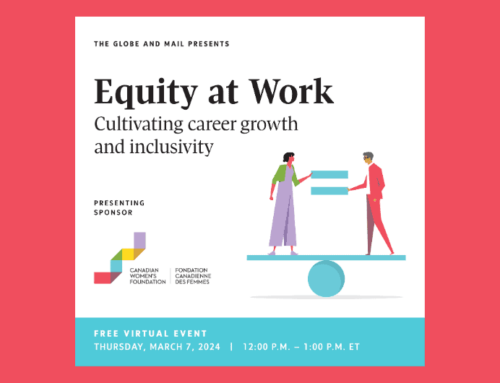Diversity in all spaces should be standard, and diversity in technology is especially important because consumers and end users are diverse people. Diversity makes for better products and services – ones that are smarter, safer, more efficient, and inclusive. It’s a no-brainer that technology should be informed by the audiences that use it, and that includes women, girls, and non-binary folks of all races, ages, sexual preferences, and abilities.
I started my career as a graphic designer and wanted to connect with other women in the design field. I came across an HTML/CSS workshop that was being hosted at my local YWCA. Attending that workshop was my first experience with what was then an organization called Ladies Learning Code – now Canada Learning Code – that aims to ensure all Canadians (particularly women, girls, people with disabilities, Indigenous youth, and newcomers) are given equal opportunity in tech, a sector where they’ve historically been underrepresented.
After years working for myself as a freelance/contract designer, I decided to take the leap to study development fulltime! It scared me, and I wasn’t sure if I would do well, but I did. I thought it would be a powerful and viable tool to have, and it’s since opened a lot of doors for me.
The Importance of Diversity in Product Development
Coding and digital skills have become an important part of many industries, it’s not just for developers. As technology advances, so does the need for people who are able to build it at all touch points; from conception, to design, to coordination and management, as well as research and testing. There are so many tech careers and disciplines that contribute to the development of usable applications for the public to solve problems across industries. According to Facebook, by 2020 there will be a million programming jobs left unfilled.
Diversity in the tech sector has a meaningful impact on the products that get released into the world and allows workers to prepare better, to anticipate alternative viewpoints, needs, and user pain points. Here are some examples to consider:
- A hand soap dispenser that couldn’t register darker skin tones because in the user testing phase there was only recruitment of testers with lighter skin.
- An offensive filter on Snapchat that a diverse roster of employees could have prevented from making it to production – if they’d been consulted.
- Or, an automotive safety rating measured only from male proportioned crash test dummies. It wasn’t until 2011 that some automotive companies were required to use a female-sized dummy in their crash testing. A 2011 study by the University of Virginia’s Center for Applied Biomechanics found that seat-belted female drivers in actual crashes had a 47% percent higher chance of serious injuries than belted male drivers in comparable collisions.
The Confidence Gap
There are a lot of layers involved in recruiting and sustaining diversity in the tech sector. It’s not just one thing, but several systems that consistently over time need to adapt. It’s your teachers and mentors, the classroom culture, the work environment, diversity in positions of leadership, education, engineering, testing, strategy, product and human resources.
According to an article in the Atlantic, the confidence gap may be part of the problem. Many women struggle to pursue opportunities with the same confidence as men. This starts very early, with socialization in school. School is where many girls are first rewarded for being good, instead of for being energetic, rambunctious, or even pushy. In turn, they begin to crave the approval they get for being ‘good’. As a result, many girls learn to avoid taking risks and making mistakes. This is to their detriment, as many psychologists now believe that risk taking, failure, and perseverance are essential to confidence-building.
Getting to girls early and telling them a different message – that they’re smart, competent, entitled to take risks, and learn from failure, is so crucial to building the next generation of diverse women in tech and to developing products that work for all of us.
Learn More:
- Lending a Hand and Making a Difference
- Want to See More Girls in STEM? Do Away with Gender Stereotypes
- Where Have all the Women Engineers Gone?
Take Action:
- Sign up for our e-newsletter to have our latest stories and resources sent to your inbox.
- Follow us on Facebook and Twitter to join a national conversation about gender equality.







